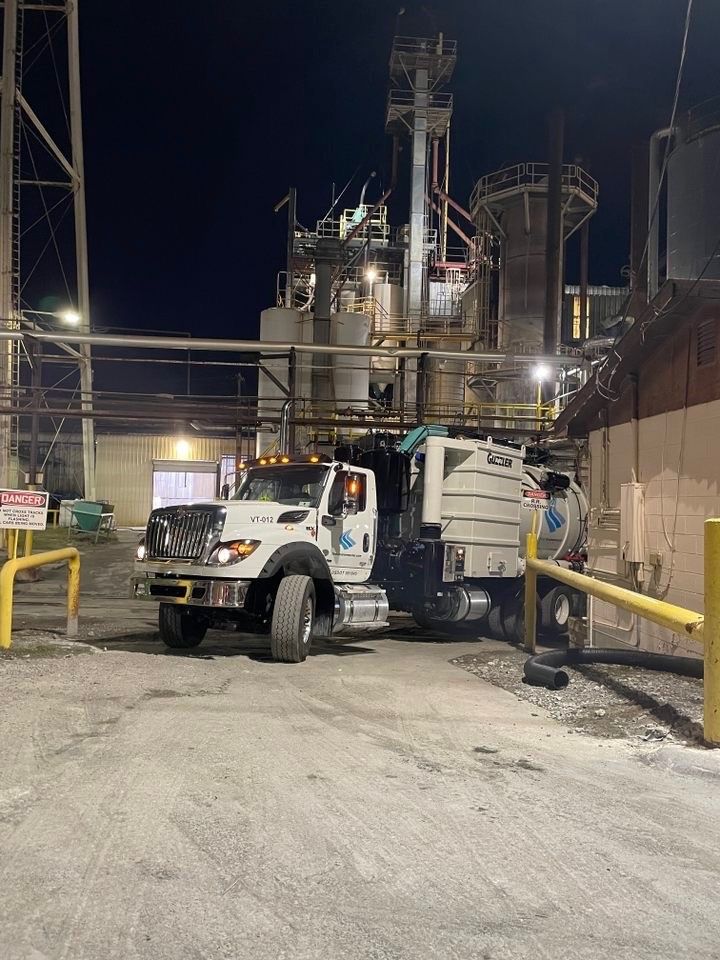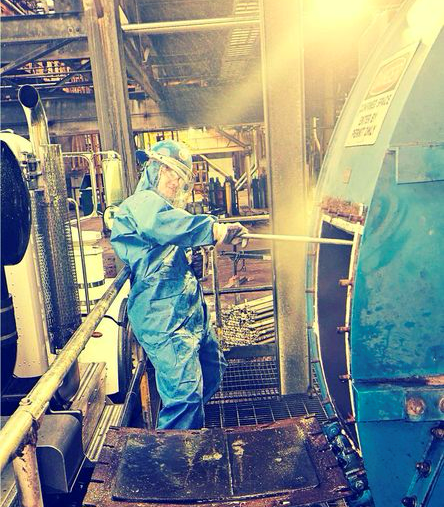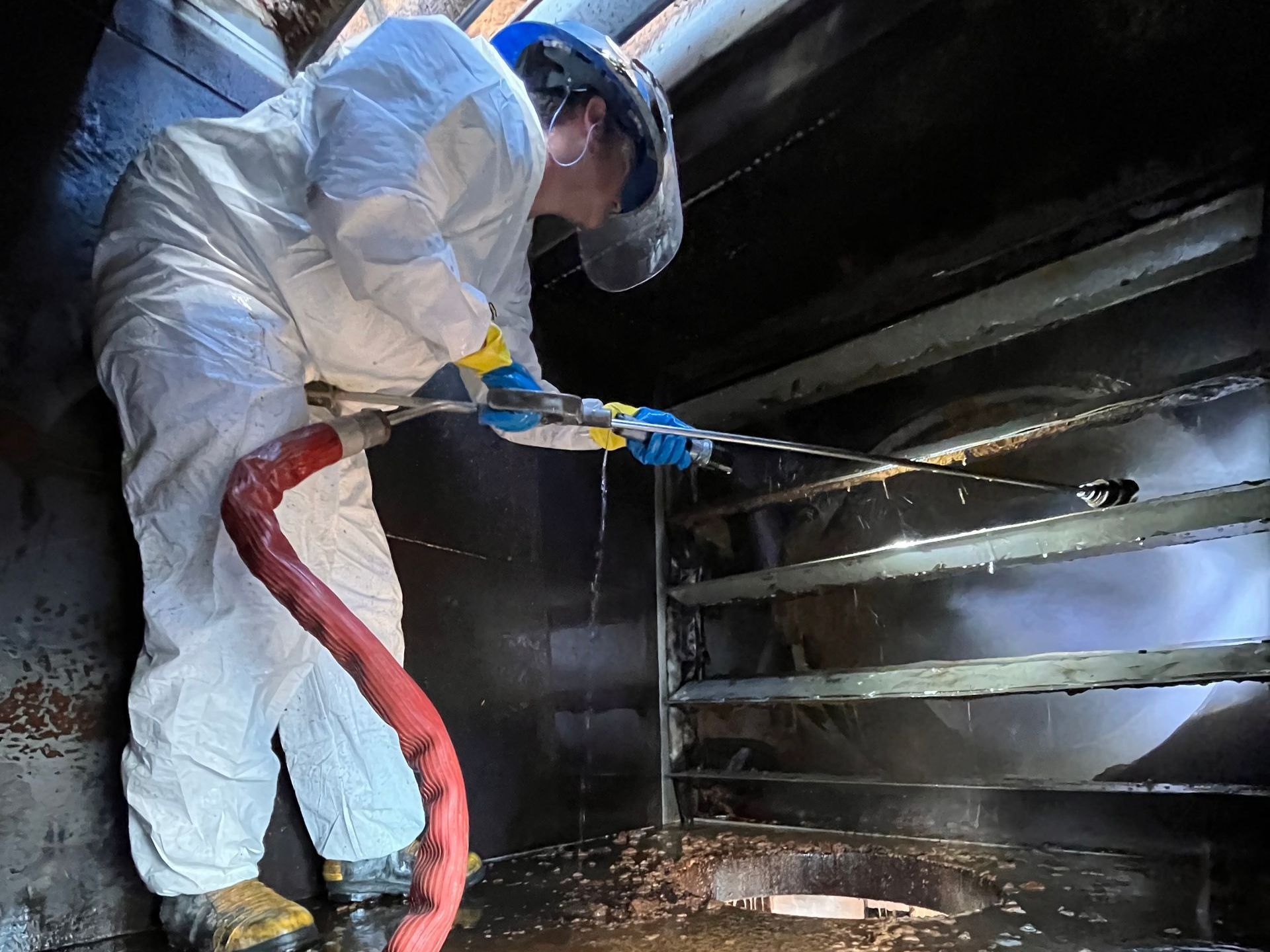The Process of Confined Space Entry
What is a Confined Space?
OSHA has a three-part definition for a confined space:
- The space must be “large enough and so configured that an employee can bodily enter and perform assigned work” AND…
- The space must “have limited or restricted means for entry or exit” AND…
- The space must not be “designed for continuous employee occupancy.”
Before entry, the appropriate steps to work within a confined space need to be written, communicated, evaluated and reviewed.
Our process for industrial confined space cleaning is tailored to various hazards, extractions, the physical space, the work to be completed, and proper personnel training. First Environmental provides trained and certified entry personnel and confined space cleaning services for our clients.

Confined Space Services In Action
The following is a summary of confined space training that hits the highlights…
The potential hazards of confined spaces:
- Toxic fumes
- Oxygen deficiency
- Explosive atmosphere
- Exposure to hazardous energies
- Moving machine parts
- Engulfment/entrapment
Safety precautions:
- Perform a hazard assessment: Identify all hazards and needed controls. Include risks created by the work itself.
- Get a confined space permit signed by a confined space entry supervisor.
- Monitor air:
- Provide initial and continuous monitoring for toxics, flammables, and oxygen.
- Ventilate and monitor when performing hot work or applying chemicals in a confined space or an adjacent area.
- Check for adequate, continuous ventilation when hazardous atmospheres are possible.
- Lock-out all energy sources: This includes stored energies.
- Use proper controls and protective equipment: Respiratory, skin, eye, and fall protection.
- Set up a retrieval device.
Confirm that training is current for:
- Entry personnel
- Attendants
- Supervisors
- Rescue personnel
- Ensure that rescue personnel is available.
- Ensure that the attendant is:
- At the point of entry
- In communication with rescue and entry personnel
Know how to prevent heat stress:
- Take breaks as needed in a cool environment
- Drink fluids
Industrial Confined Cleaning Services Nearby
First Environmental has the training, experience, resources, and knowledge required for successful confined safety entry work. Facility managers and Maintenance managers turn to First Environmental when they need confined space entry work done by professionals that pay attention to detail, follow the rules, work hard, work smart and work safely.
To schedule a confined space cleaning service or to speak with a representative about other industrial cleaning services call First Environmental today.





